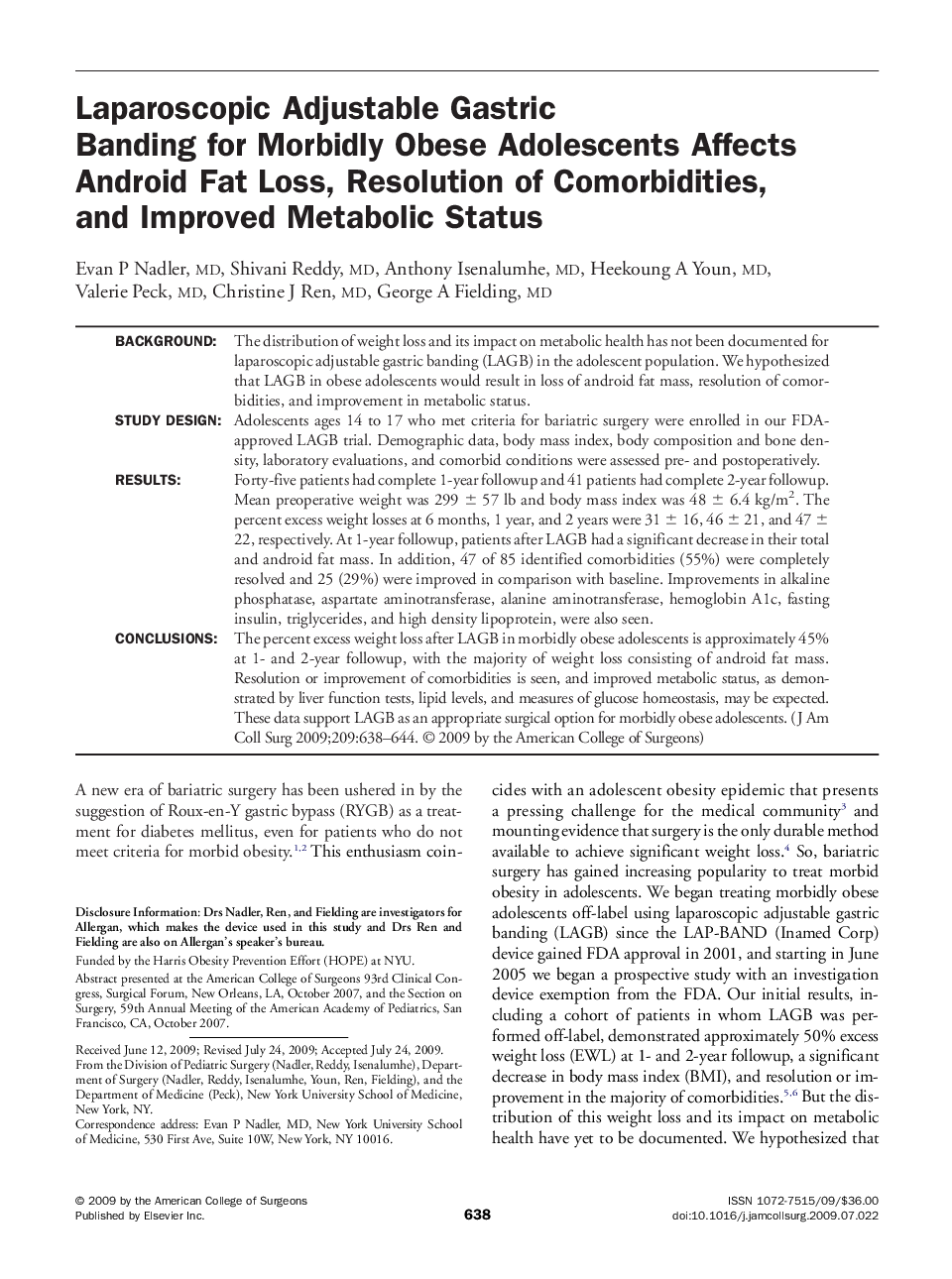| Article ID | Journal | Published Year | Pages | File Type |
|---|---|---|---|---|
| 4293800 | Journal of the American College of Surgeons | 2009 | 7 Pages |
BackgroundThe distribution of weight loss and its impact on metabolic health has not been documented for laparoscopic adjustable gastric banding (LAGB) in the adolescent population. We hypothesized that LAGB in obese adolescents would result in loss of android fat mass, resolution of comorbidities, and improvement in metabolic status.Study DesignAdolescents ages 14 to 17 who met criteria for bariatric surgery were enrolled in our FDA-approved LAGB trial. Demographic data, body mass index, body composition and bone density, laboratory evaluations, and comorbid conditions were assessed pre- and postoperatively.ResultsForty-five patients had complete 1-year followup and 41 patients had complete 2-year followup. Mean preoperative weight was 299 ± 57 lb and body mass index was 48 ± 6.4 kg/m2. The percent excess weight losses at 6 months, 1 year, and 2 years were 31 ± 16, 46 ± 21, and 47 ± 22, respectively. At 1-year followup, patients after LAGB had a significant decrease in their total and android fat mass. In addition, 47 of 85 identified comorbidities (55%) were completely resolved and 25 (29%) were improved in comparison with baseline. Improvements in alkaline phosphatase, aspartate aminotransferase, alanine aminotransferase, hemoglobin A1c, fasting insulin, triglycerides, and high density lipoprotein, were also seen.ConclusionsThe percent excess weight loss after LAGB in morbidly obese adolescents is approximately 45% at 1- and 2-year followup, with the majority of weight loss consisting of android fat mass. Resolution or improvement of comorbidities is seen, and improved metabolic status, as demonstrated by liver function tests, lipid levels, and measures of glucose homeostasis, may be expected. These data support LAGB as an appropriate surgical option for morbidly obese adolescents.
